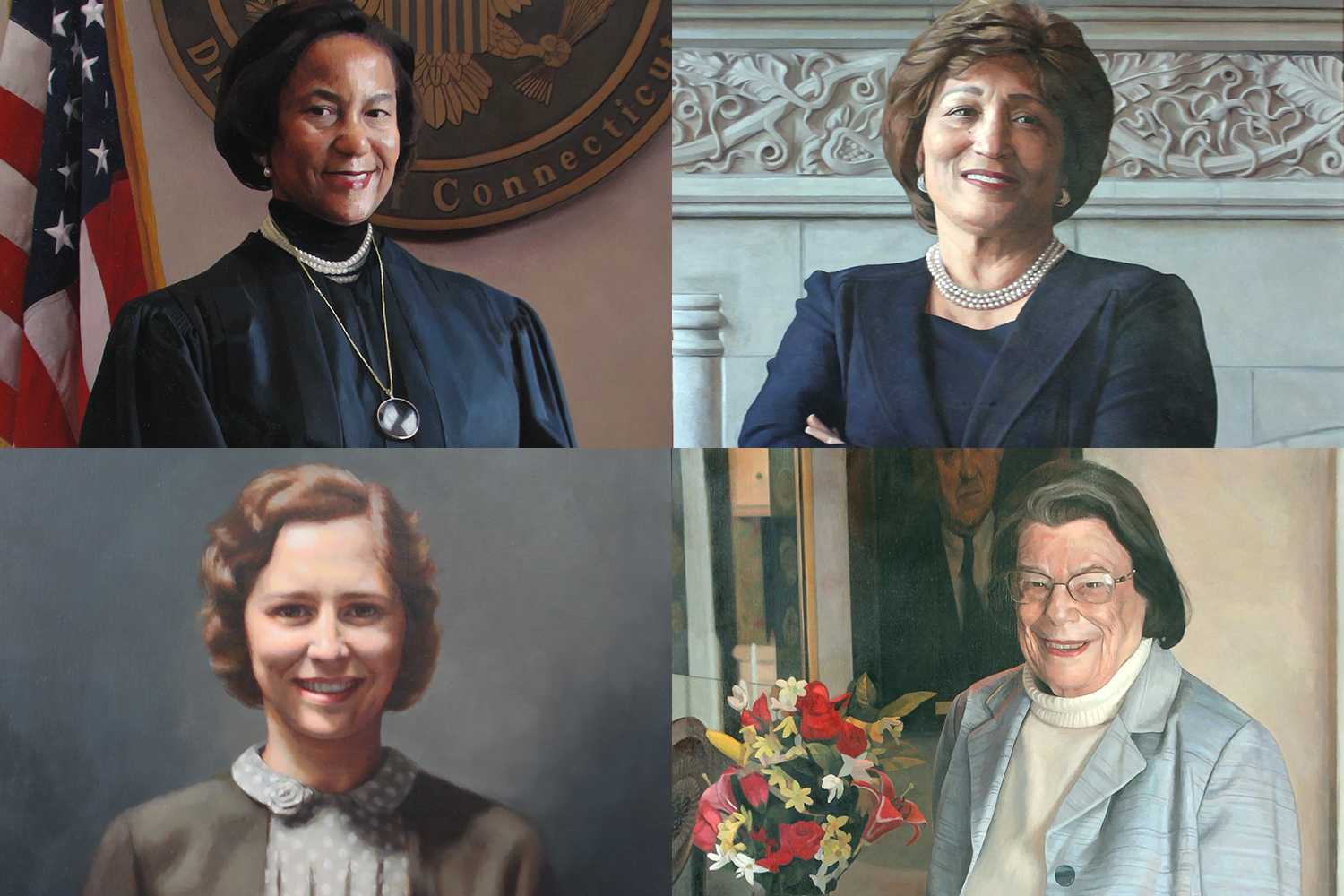For decades, as more women and people of color arrived in the classrooms and faculty offices at UConn School of Law, the oil portraits on the walls of the stately Reading Room in William F. Starr Hall remained entirely white and male.
Six patrician deans and benefactors have looked down on diversifying audiences at orientation, conferences, and special events. Students, faculty members, and alumni did not fail to notice. In 2007, the law school added photographs of 76 female Connecticut judges, hanging the images from the bookshelves that line the Reading Room. It helped, but Dean Timothy Fisher sought a more lasting way to complete the story and recognize the contributions women have made to the law school.
On April 23, he unveiled four portraits of women, two of them African American, that will hang on the Reading Room walls. The project was funded by an anonymous donor.
The subjects include Caroline Lillard, who founded the law school as the Hartford College of Law in 1921 with her husband, George W. Lillard. Her role as an administrator and librarian in the law school’s early years earned her a mention in some official histories, but little credit otherwise. Now her portrait, painted by Ellen Cooper from a photograph, will join the painting of her husband, which the law school commissioned soon after his death in 1940.
The other three new portraits depict Vanessa L. Bryant, a 1978 graduate of the law school and the first female African American federal judge in New England; Linda Kelly, a 1976 UConn Law graduate who became the first woman and the first African American to serve as president of the Hartford Foundation for Public Giving; and Ellen Ash Peters, the first female chief justice of the Connecticut Supreme Court and a visiting professor at UConn School of Law. Their portraits were painted by Jack Montméat.
“We now have the opportunity for these four additional portraits to enhance and complete the story of the people who have made this such a great school,” Fisher told a crowd of about 100 people who gathered in the Reading Room for the dedication of the portraits.
Kelly quoted abolitionist Frederick Douglass, who said that portraits can be catalysts for social change by “making ourselves and others objects of observation and contemplation.” She invited the audience “to observe, to contemplate, and imagine for ourselves and our nation a stronger, healthier, more equitable and inclusive society.”
A committee of three experts assisted Fisher in the project: Susan Ballek, executive director of the Hill-Stead Museum in Farmington; Erin Monroe, associate curator of American paintings and sculpture at the Wadsworth Atheneum in Hartford; and Nancy Stula, executive director at The William Benton Museum in Storrs.
The photographs of the female judges, taken by Isabel Chenoweth and recently updated with additional portraits, will remain in the Reading Room on indefinite loan from the Connecticut Bar Foundation.



